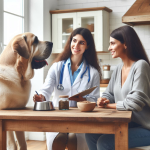Holistic Nutritionists for Pets: How to Improve a Dog or Cat’s Health
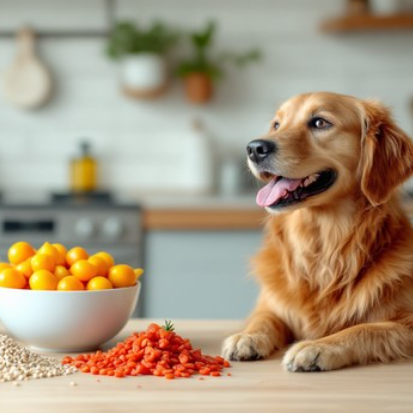
As more pet parents seek natural and preventive approaches to caring for their furry companions, holistic nutritionists for pets are becoming a vital part of a pet’s wellness journey. Unlike conventional approaches that treat symptoms alone, holistic pet nutrition focuses on the whole animal, mind, body, and spirit, using food and nutrition as tools to support long-term health. If you’re exploring ways to optimize your dog or cat’s diet naturally, booking a certified holistic pet nutritionist can be an empowering first step. Here’s everything you need to know about holistic nutritionists and how they can help improve the wellness of your family pet! (more…)
7 Reasons Your Dog’s Nose is Running
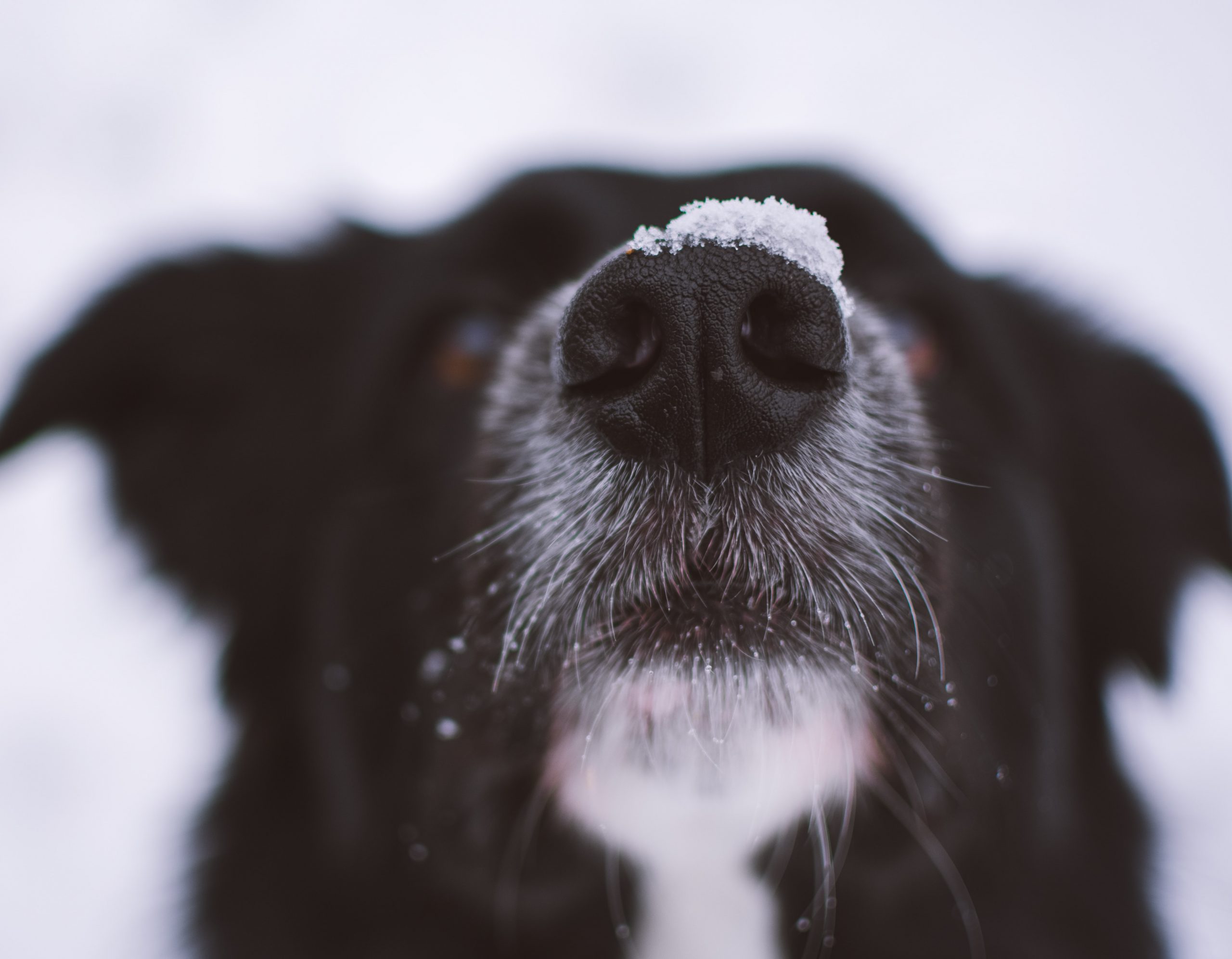
While a runny nose isn’t a big deal to us, it can be for our dogs. Smell is a dog’s strongest sense, as they have over 220 million smell receptors in their nose compared to our mere 5 million. That makes their nose about 100,000 times more powerful than ours.
A runny nose can be sign of excitement or anxiety, but it can also be indicative of something more. Understanding the cause of your pup’s runny nose is important to help you determine the best action to help them. Without further ado, let’s get into it!
Allergies
Allergies are the primary cause of nasal discharge for dogs. If your pet has a runny nose, this is the first thing you should consider. Like us, our pet dogs can also have allergic reactions. The most common allergies come from pollen, drugs, food, spores, mites, and even chemicals. If your dog’s runny nose is due to an allergy, it may come with other symptoms. You should observe if your dog sneezes, coughs, itches, or has a nosebleed. Your pet may also have eye discharge or experience difficulty breathing. It’s challenging to deal with allergies, especially when you don’t know what your dog is allergic to. For this reason, it would be a good idea to have your pet tested for allergies at your vet.
Blockage
Another common reason for a runny nose is a blockage. Discharge may occur when something is stuck in your dog’s nostril. If your dog’s runny nose is due to a blockage, there may be other signs from your pet like sneezing, nose pawing, and nose bleeding. If you’re not comfortable with removing the thing that is blocking your dog’s nose on your own, you can take them to the vet. Moreover, your vet will provide proper medication to prevent any infection.
Infection
A runny nose can be a sign that your pet suffers from bacterial, fungal, or viral infection. If your dog has a runny nose due to infection, it may include other symptoms like: odor, nosebleed, frequent coughs, and even choking due to postnasal drips. The treatment for infection may vary. A bacterial infection may need antibiotics, fungal infections require unique treatments, and if it’s a chronic infection, your dog might need surgery. As always, consult your vet with questions and concerns.
Nasal Polyps
According to Mayo Clinic, Nasal Polyps are soft, painless, noncancerous growths on the nasal passages’ lining. They hang down like teardrops and may result from chronic inflammation. Runny nose due to such things usually involves surgery. Since this complication tends to reappear, it may need additional treatment.
Nostril problems
Nostril problems happen to some dogs more than others. The breeds that are more prone are usually flat-faced breeds. Those with soft and floppy nose cartilage also experience this more than the others. For such dogs, surgery may be necessary. However, if your pet is still a puppy, your vet may ask you to wait until adulthood.
Canine Distemper
Canine Distemper can produce a sticky and yellowish discharge in dogs. It may likely be an explanation if your dog oozes a yellowish substance. Alongside a runny nose, there can also be other symptoms like fever, pneumonia, twitching, and convulsion. Such a condition is preventable by getting your pet vaccinated between ages 8-16 weeks.

Did you find this article useful? Would you like 100% free access to more articles like these, and free access to over 5,000 vetted pet care service professionals throughout the United States? Sign up here for a free Petworks account, and take 10% off your first booking, on us!
Rocky Mountain Spotted Fever (RMSF)
According to CDCP, Rocky Mountain spotted fever is a bacterial disease caused by an infected tick bite. If your pet’s running nose is due to this RMSF, it may include other symptoms like high fever, lethargy, coughing, eye inflammation, and even pain. The treatment may likely include several weeks of antibiotics.
What can I give my dog for a runny nose?
The current pet market has no shortage of options for runny nose treatment. You can find many remedies to help your pet, including drugs and home remedies. Of course, medication for dogs would be best if it has been recommended by an expert. Thus, it’s always appropriate if you inquire and get your vet’s approval before giving your pet any drug.
 Here are some typical medications to give your pet for a runny nose:
Here are some typical medications to give your pet for a runny nose:
Antihistamines
Antihistamines relieve allergy symptoms or counteract allergic reactions. This drug is usually safe for pets. However, it may cause drowsiness and hyper activeness.
According to VCA Hospitals, among the widely-used antihistamines are:
- Benadryl (diphenhydramine)
- Zyrtec (cetirizine)
- Claritin (loratadine)
Corticosteroids
VCA Hospitals also state that corticosteroids are steroid hormones in the adrenal glands. This steroid works in runny noses by suppressing the inflammation due to an allergic response. Using this medication can ease your pet’s running nose and breathing difficulties.
Anti-inflammatory drugs
According to the FDA, anti-inflammatory drugs reduce ongoing pain and inflammation in animals.
The following drugs are safe for your pet:
- Carprofen (Novox or Rimadyl)
- Deracoxib (Deramaxx)
- Firocoxib (Previcox)
- Meloxicam (Metacam)
Antibiotics
Antibiotics work by destroying the bad cells without damaging your dog’s healthy cells. It’s the most commonly prescribed medication to aid a runny nose.
Common antibiotic medications for dogs are:
- Enrofloxacin (Baytril)
- Amoxicillin/Clavulanic acid (Clavamox)
- Metronidazole (Flagyl)
- Clindamycin (Antirobe)
As always, the use of any medication for dogs would be better with a vet’s approval or recommendation. This way, your pet will get proper treatment without compromising its health.
Home remedies for your pup’s stuffy nose
If you don’t want to use medication and you would rather soothe your pet’s nose naturally, there are other things you can do at home.
Steam
Steam allows us to breathe better when we’re having nasal problems. The same principle applies to our dogs as well. You can open up a hot shower and let it steam the bathroom for a while. Giving your pet a 15-minute steam break will do them good. Or, you can also use a humidifier to create steam near your dog’s area. You can take it up a notch by adding some essential oils that are perfect for your dog.
Aromatherapy
Aromatherapy offers great relief, not only for us but for our pets too. Of course, essential oils can be ideal for pets. However, you can consult your vet if you plan on using them.
Essential oils often used to treat colds in dogs include:
- Eucalyptus oil
- Peppermint oil
- Lavender oil
When trying aromatherapy, always remember that your dog has a strong sense of smell. Thus, it would be best not to go overboard with the use of essential oils. Less is more!
Herbs and honey
Herbs and honey go a long way when it comes to soothing a dog’s nose. Herbs like elderflower and kali bichromicum can help relieve cold symptoms. Honey also soothes canine coughs and colds. However, due to its sugar content, it’s only ideal for dogs with no diabetic history.
Chicken Soup
Soup and other fluids also work wonders in aiding your pet’s condition. Of course, they cannot eat the classic soup that we do because it’s high in sodium and other toxic ingredients. If you’re making one without adding seasonings and flavors, you can offer it to help your dog. You can also find and hire clinical pet nutritionists on Petworks, via remote consultations.
Rest
Nothing beats old-fashioned rest. Allowing your pet to sleep and rest more will help them gain strength back. If you have a heated bed, it’s ideal for soothing the congestion your pet may feel. However, it’s not necessary to spend on it. A good long rest is enough to help your pet as it suffers from a runny nose. As owners, we always want the best for our pets. While these five things may seem simple and easy to do, they go a long way.
Can I give my dog Benadryl for a runny nose?
The short answer is yes. You can give your dog Benadryl to relieve its runny nose. Benadryl is an antihistamine that relieves allergy symptoms and even counteracts allergic reactions. Although this drug is safe for pets to take, remember that it can cause drowsiness. Also, it can make your pet more hyperactive. It would be ideal to get a recommendation from your vet before giving your dog Benadryl. That way, you can be sure that you are giving your pet the proper medication. Aside from Benadryl, you can also consider other antihistamines like Zyrtec (cetirizine) or Claritin (loratadine).
Do dogs have a runny nose when they’re scared?
Yes, your dog’s runny nose may be due to fear. When dogs get excited or scared, there is a high possibility that they will have a running nose. As I said earlier, a runny nose can result from many things. It is important to ensure that it is a result of anxiety or excitement. To know this, try to observe your pet’s reaction. If the dripping subsides as your dog calms down, then it’s due to fear or excitement. If this is the case for your pet, then you don’t have to worry about it. The runny nose will pass as soon as your pet calms. However, if your pet continues to have a runny nose, then it would be best to check for other symptoms.
Why is my dog’s mucus green?
A runny nose can be caused by many things. One way to tell is from the color of the mucus that comes out. It will be different from the usual thin, watery, and clear – it may be thick, yellowish, or green. The nasal discharge can either be Serous, Mucous, or Purulent. Serous is the term associated with a watery, thin, and clear nasal discharge. This type of discharge usually comes from an allergy. Mucous is a thick discharge that comes from either yellow or white color. This type usually happens due to inflammation. Lastly, the Purulent, which is green or yellow, usually comes from a bacterial infection. If your pet’s runny nose releases green discharge, it may be a good time to consult your vet.
Why is my dog shaking (and has a runny nose)?
If your dog continues shaking while having a running nose, it may be due to Canine Distemper. According to Forever Vets, such a condition comes from a virus called Distemper. It happens mostly to young dogs and puppies that have not been vaccinated. The virus can cause flu-like symptoms, one being a runny nose. Also, it can cause tremors, which is why your dog may be shaking. To prevent such, take your dog to a vet within 8-16 weeks and have it vaccinated. It’s the best way to avoid a canine distemper.
How do I clean my dog’s boogers?
If you want to clean your dog’s nose, the best method is steaming. The steam from a hot shower creates the best relief, and it will help you to clean up your dog’s nose. Here are some steps you need to follow:
Build up the steam
You’ll need a lot of steam to help your pet’s nose. In your bathroom, let the hot shower run and close the vents. This way, you’ll make more steam that will make the bathroom better for your dog. The steam will help loosen the mucus and booger in his nostrils. It will then be easier for you to clean.
Massage your pet’s nose
Massaging your pet’s nose afterward can help to loosen the mucus. This action will help relieve any irritation for your pet.
Use a suction bulb
Use a baby nasal suction bulb. Insert the tip into the nostril and gently suck the mucus out.
Repeat it until the nose is clear from boogers. It will be easy to suck due to the massage and steam.
Wipe with a warm and moist cloth
A hot and steamed towel works best. The warmth and moisture it brings are ideal for cleaning your pet’s nose.
Summary
A runny nose can happen to any dog at any time. Even if your dog is very healthy and active, it may catch a cold and experience a runny nose. When this happens, you don’t have to worry too much, as there is always something you can do to help your dog.
As owners, we have to know what can harm our pets. By knowing the cause, you can understand and take appropriate action to relieve your dog.
 Note: if you have serious concerns about any of your dog’s symptoms, it’s best to notify your vet immediately.
Note: if you have serious concerns about any of your dog’s symptoms, it’s best to notify your vet immediately.
About the Author

Ales grew up on a small family farm near Prague. He has always been surrounded by animals, including rabbits, cows, pigs, chickens, birds, guinea pigs, and more since he was a child. He now lives with his dog and cat and writes a blog about animals. You can read more of Ales’ articles about pets on his blog Animal Fate.
 In 2021, Dr. Marty Goldstein DVM joined the pet care platform Petworks as an advisor in its Animal Nutrition care division. Dr Marty Nature’s Blend is on a mission to help your pets live their healthiest lives possible. Dr. Marty’s pet nutrition expertise and guidance has helped Petworks evolve and become the preeminent animal and pet nutrition consultation service for pet parents in North America.
In 2021, Dr. Marty Goldstein DVM joined the pet care platform Petworks as an advisor in its Animal Nutrition care division. Dr Marty Nature’s Blend is on a mission to help your pets live their healthiest lives possible. Dr. Marty’s pet nutrition expertise and guidance has helped Petworks evolve and become the preeminent animal and pet nutrition consultation service for pet parents in North America.
 In 2022, Blue Buffalo Founder Bill Bishop Jr. joined Petworks as Senior Advisor in our Animal Nutrition Care Division. Bill brings his extensive expertise in pet food innovation and business leadership. His guidance helps Petworks enhance our pet nutrition service offerings, helping to ensure that pet parents throughout the world receive trusted, science-backed nutritional support for their dogs, cats, and animals.
In 2022, Blue Buffalo Founder Bill Bishop Jr. joined Petworks as Senior Advisor in our Animal Nutrition Care Division. Bill brings his extensive expertise in pet food innovation and business leadership. His guidance helps Petworks enhance our pet nutrition service offerings, helping to ensure that pet parents throughout the world receive trusted, science-backed nutritional support for their dogs, cats, and animals.
 Petworks Co-Founder Kevin Kinyon is a life-long animal lover who works tirelessly to improve the lives of pets and their parents. Human and animal qualities he values most are integrity, humor, and empathy.
Petworks Co-Founder Kevin Kinyon is a life-long animal lover who works tirelessly to improve the lives of pets and their parents. Human and animal qualities he values most are integrity, humor, and empathy.
How to Start a Pet Care Business in 2025
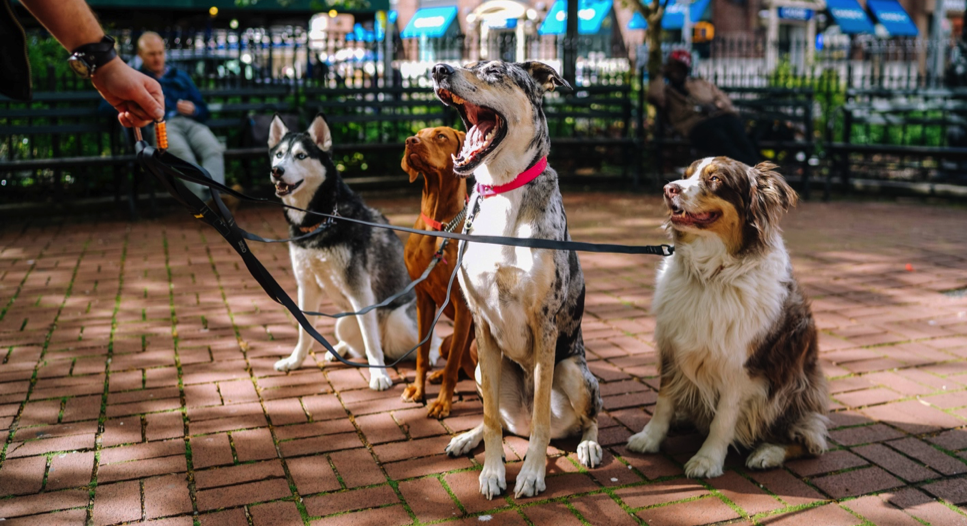
How to Start a Pet Care Business in 2025. Pet care continues to be a booming business in the Unites States and other parts of the world. The industry has many different categories. These categories include pet grooming, doggy daycare, dog obedience training, pet sitting services, pet nutrition consulting, among other pet-related services. Though pet care service is a lucrative business, becoming a pet care pro is a task that needs patience, faith, and sacrifice, among other essential traits. There is more to being a pet care professional than just playing with the pets and taking them for a walk. Pet care is always physically demanding and often times challenging work. (more…)
2026 Pet Industry Forecast
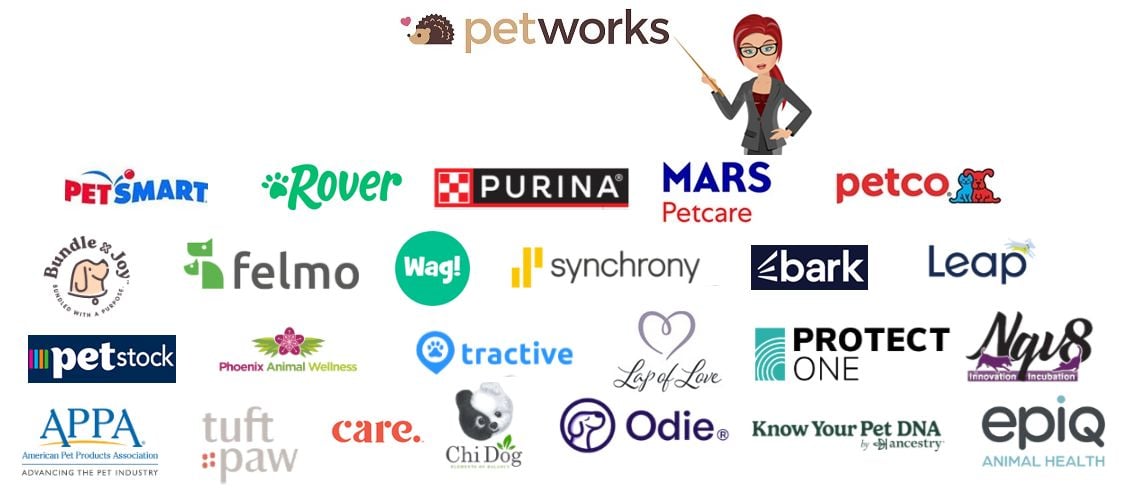
The Pet Industry. Predictions for the 2026 Pet Care Services Industry and Economy. The pet care services industry is poised for significant evolution by 2026, driven by technological advancements, shifting consumer preferences, and a growing emphasis on pet health and wellness. As pet ownership continues to rise worldwide, the industry is expected to expand, adapting to new trends in digital services, sustainability, and personalized care. Below are Petworks predictions for the state of the pet care services industry and economy in 2026. (more…)
2025 Dog Obesity Chart

Understanding Dog Obesity: Causes, Chart, Prevention, and Treatment. Dog obesity is a growing health concern among pet parents in the United States and worldwide. Obesity in dogs occurs when a dog’s body fat exceeds healthy levels, leading to numerous health risks such as diabetes, joint problems, heart disease, and a shorter lifespan. Maintaining a healthy weight is essential for your dog’s overall well-being and longevity.

